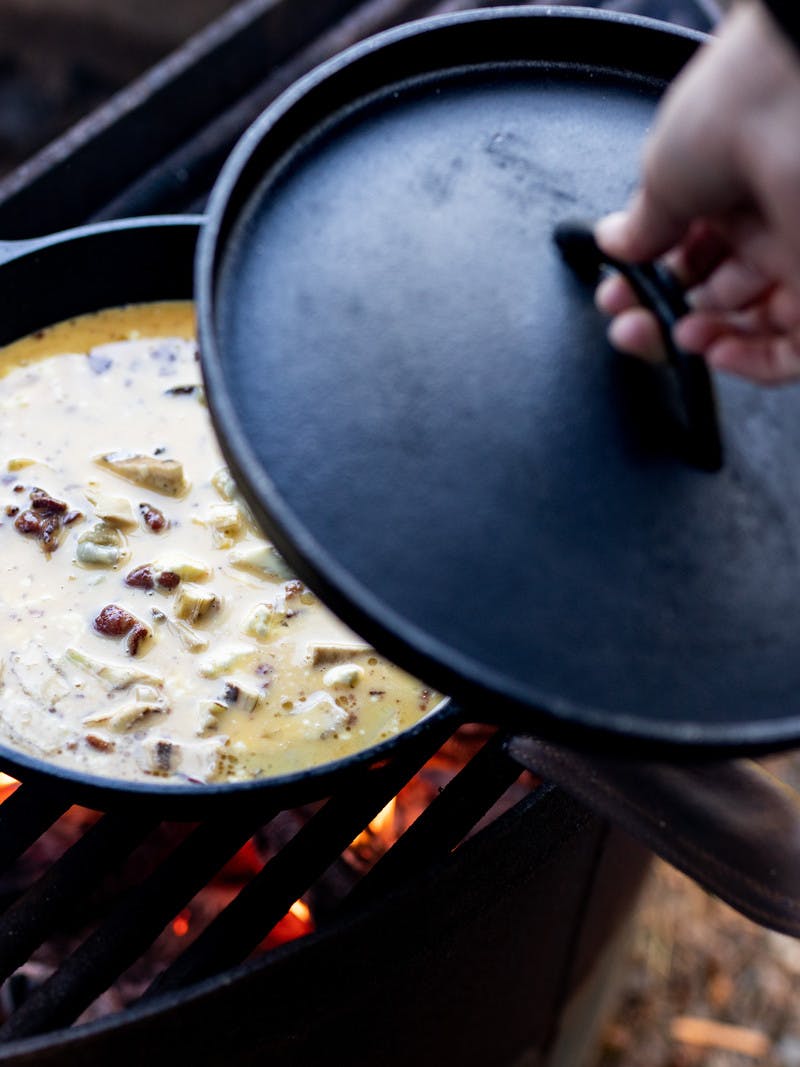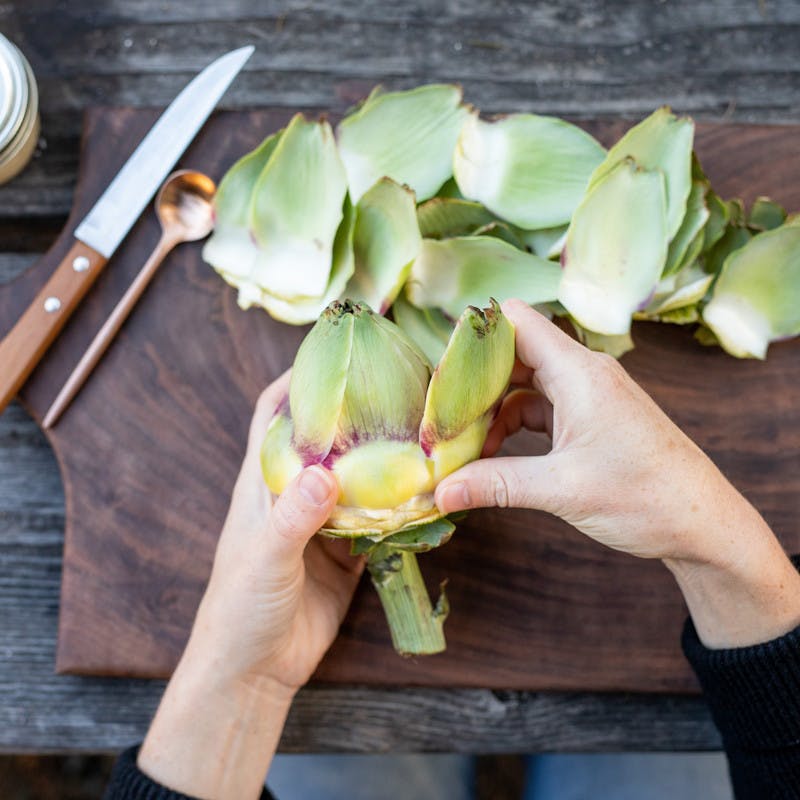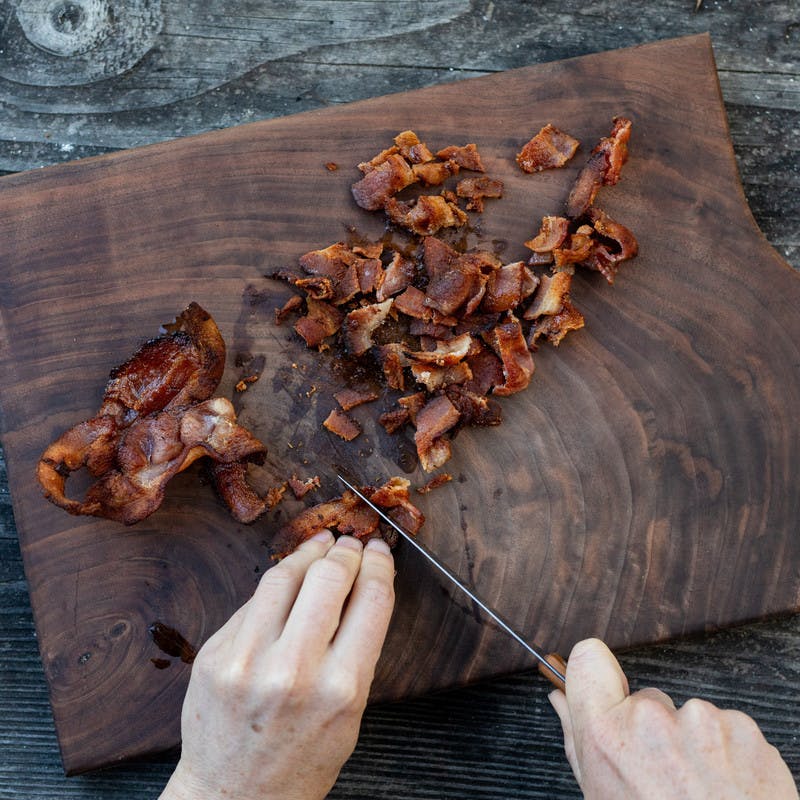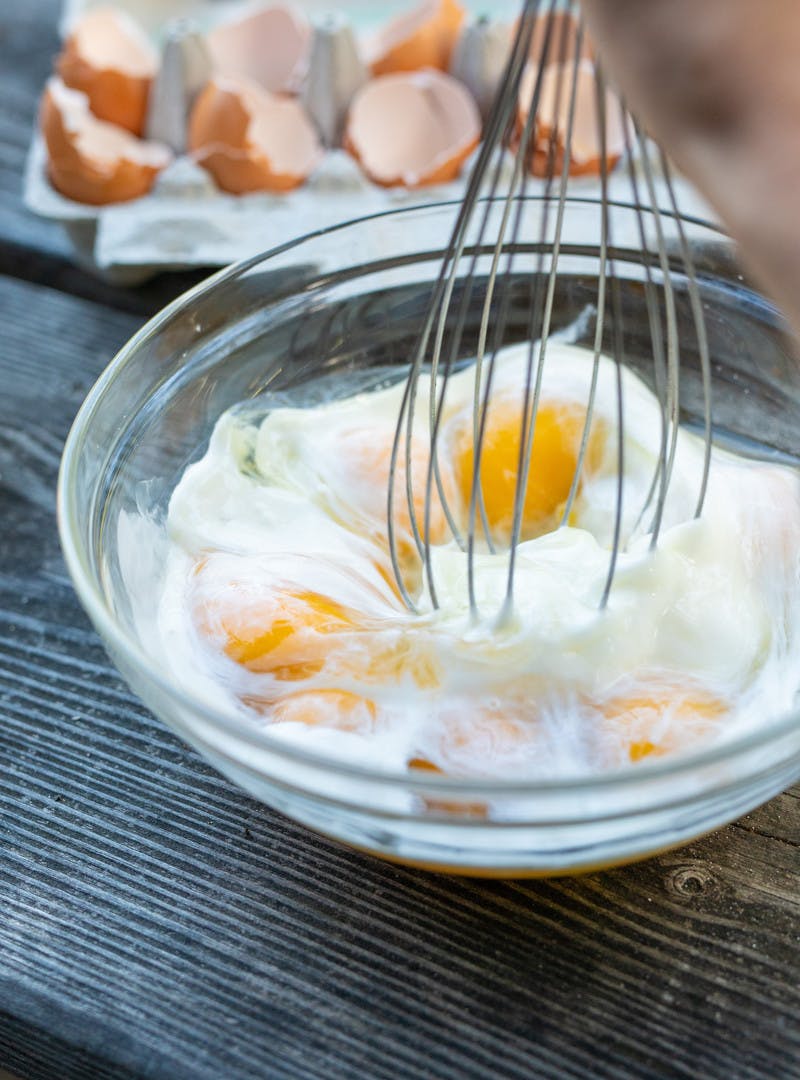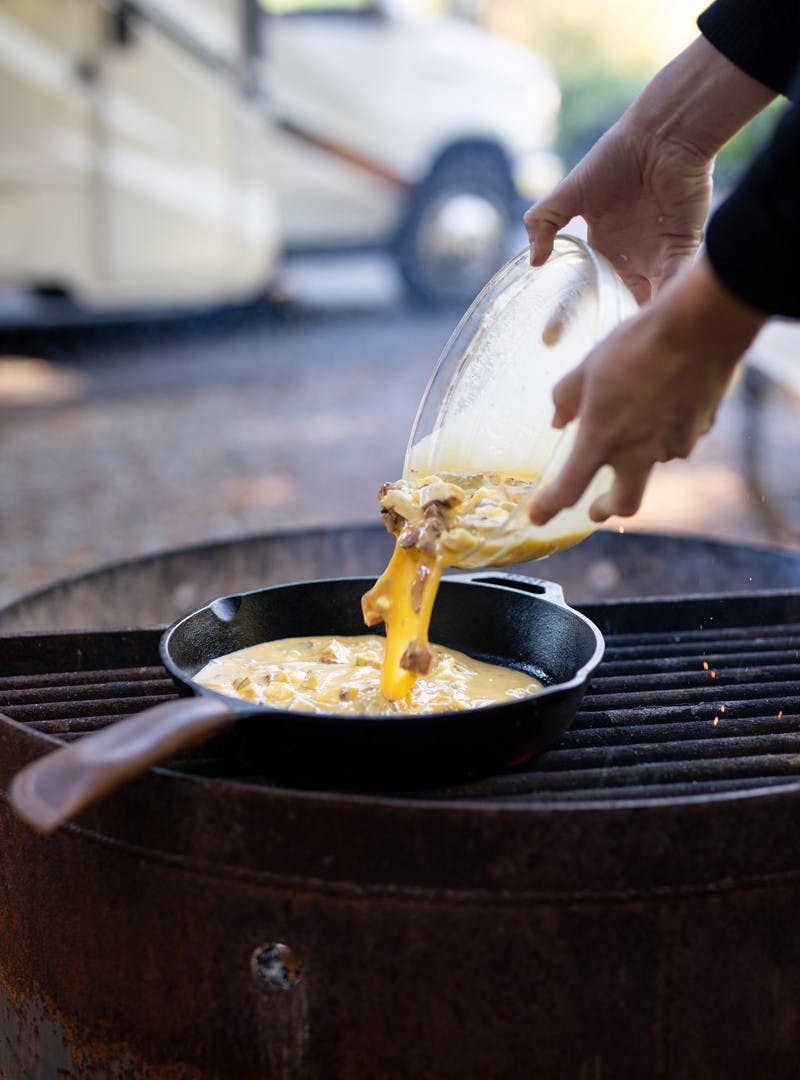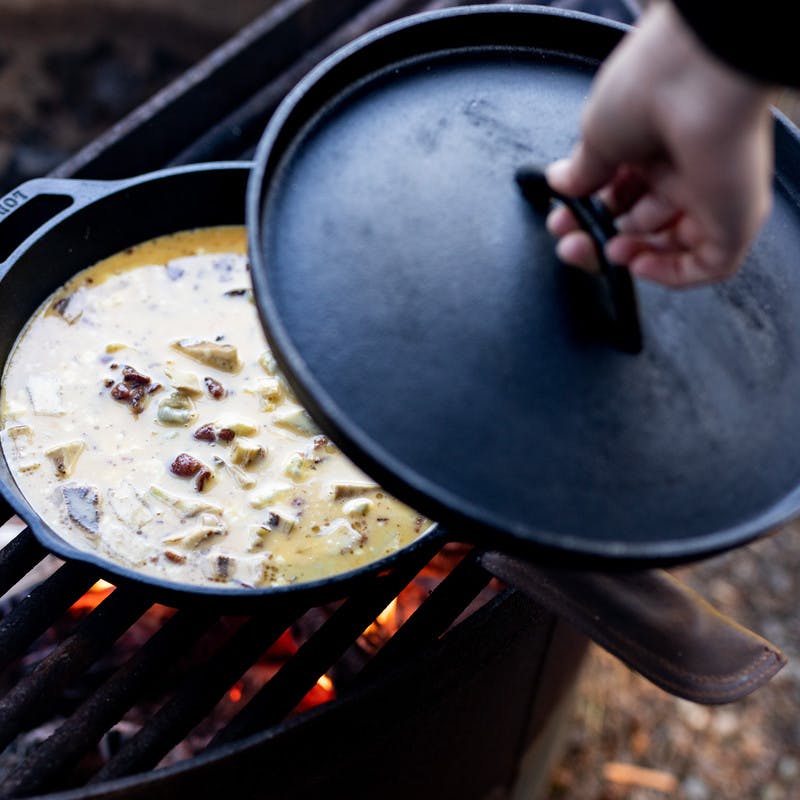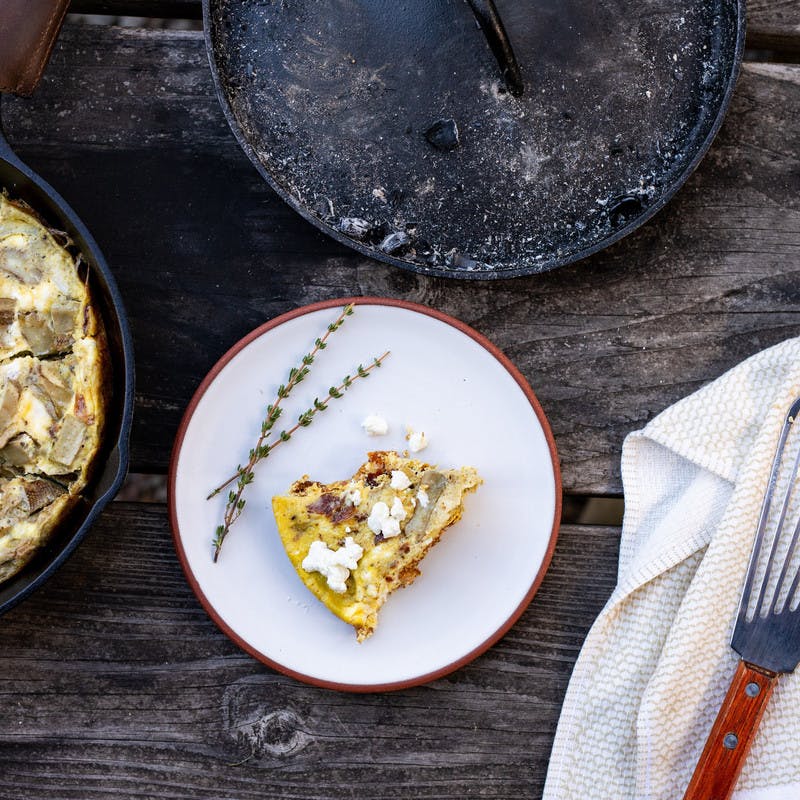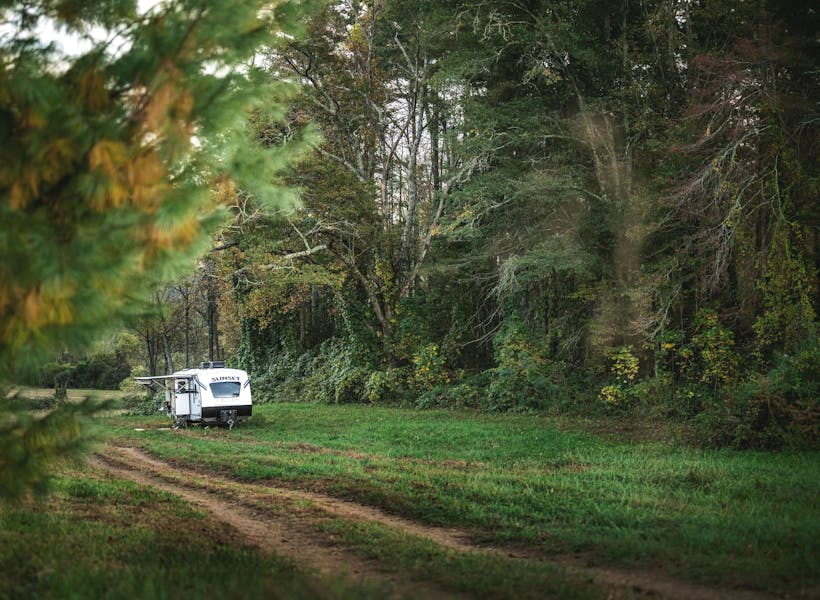INGREDIENTS
- 1 tablespoon oil
- 10 local eggs
- 2 tablespoon heavy cream
- 1/4 teaspoon salt
- 2oz chèvre (It’s just goat cheese, for those of you who didn’t go to culinary school. But call it chèvre and everybody will be impressed.)
- 4 strips bacon (Or as much as you want.)
- 3 artichokes or one 9oz jar
- Juice from a lemon
COOKING TOOLS
- Medium pot (If using fresh artichoke)
- Cutting board (Get a big one. It’ll change your life.)
- Knife
- Whisk
- Cast-iron pan w/ lid
- Medium bowl
- Tongs
METHOD
Let’s prep. Starting from the stem, peel the leaves of the fresh artichoke until you reach a lighter green color. Next, cut it about half an inch above the stem to get rid of the top leaves. Then use a paring knife and peel the rest of them off around the edge like you’re peeling the skin from an apple. Use a spoon to carve out the “choke,” that’s those fuzzy bits at the center, and work quickly. Don’t worry about making it perfect. The artichoke can oxidize into a bluish purple, and we don’t think there’s any context in which that would ever be a good thing. To counteract, you can dip your artichoke into lemon water while peeling, but we prefer working fast. You’ve got people to feed, and this is only step one. Work until you get all that rough green skin from the artichoke, and then chop off the stem and boil it in clean lemon water until tender. This should take around 10-15 minutes.
Cook the bacon in a skillet until crispy. Cut it into 1/4” strips, and set it aside.
Season your cast-iron pan with 1 tablespoon of oil or just use the bacon grease if you’re feeling rustic. Make sure the entire surface is coated.
In a separate bowl, whisk together the eggs, heavy cream and salt. Add in your cooked bacon and artichoke.
Pour the egg batter into the cast-iron pan and add in dollops of chèvre at an even distribution. Again, insist on the word chèvre.
Cover cast-iron pan with aluminum foil or a lid, and place it in a fire with a low flame or coals. Cook for 10-15 minutes, then check the eggs. You want them to be fully cooked, opaque and slightly firm to the touch. If they’re not done, cover and continue to cook 5 minutes at a time. The flame is key—too hot, and you’ll scorch your eggs. They’ll take longer at lower heat, but they’ll come out looking just like the pictures.
Yields 5 servings.
